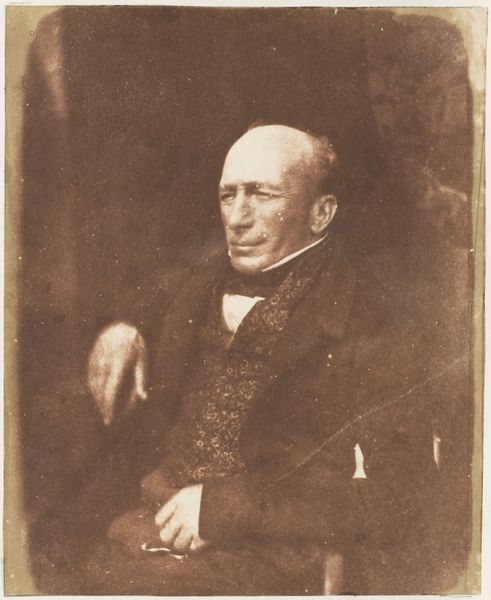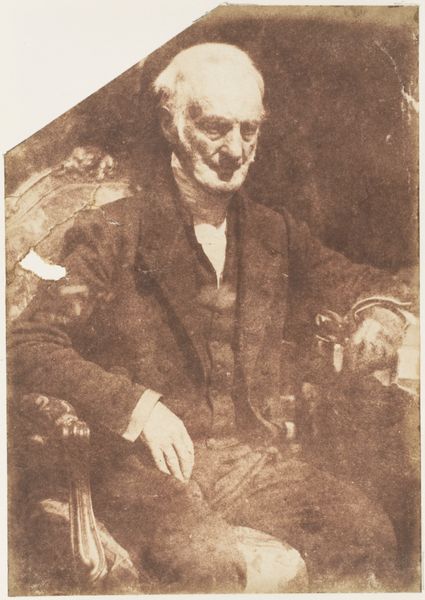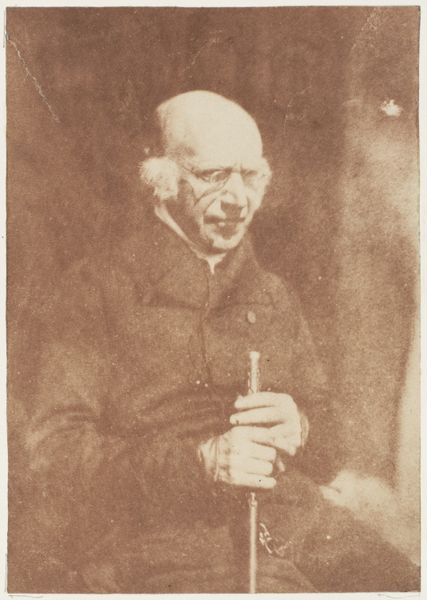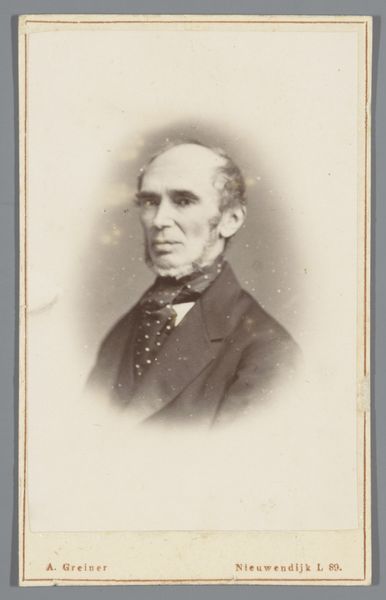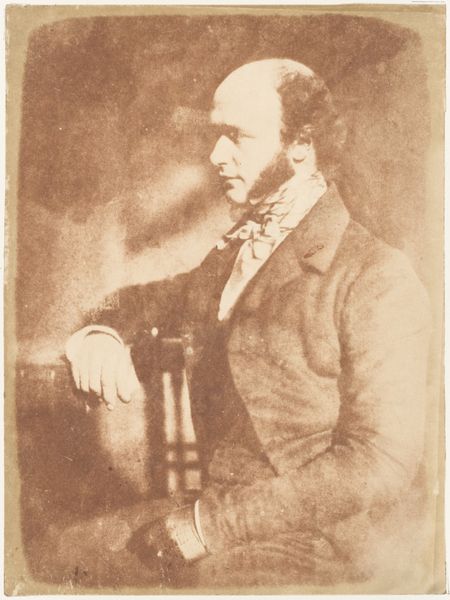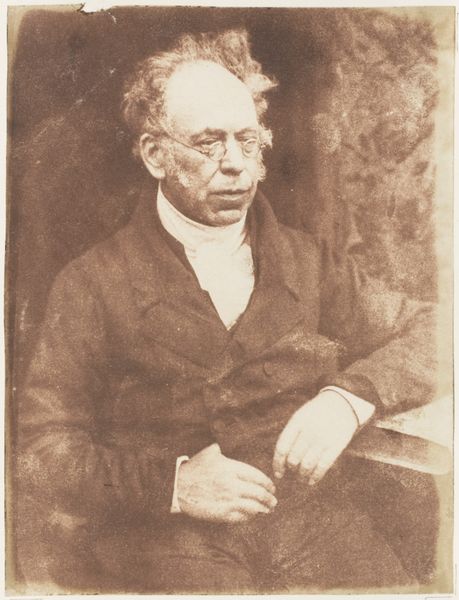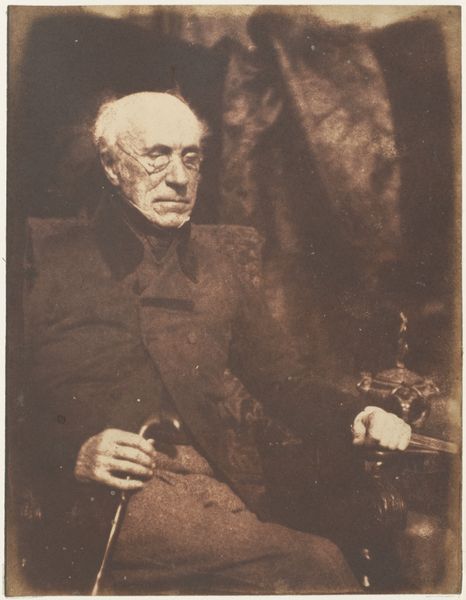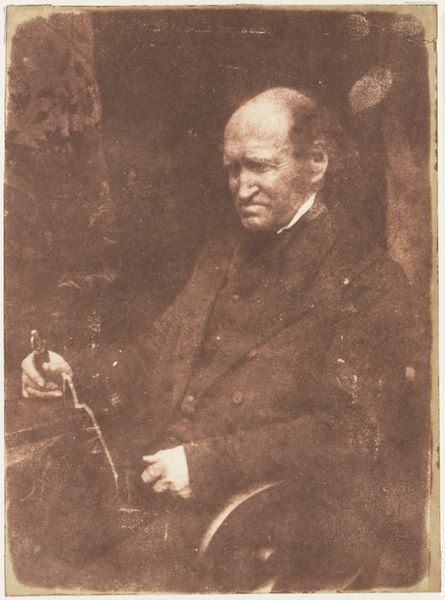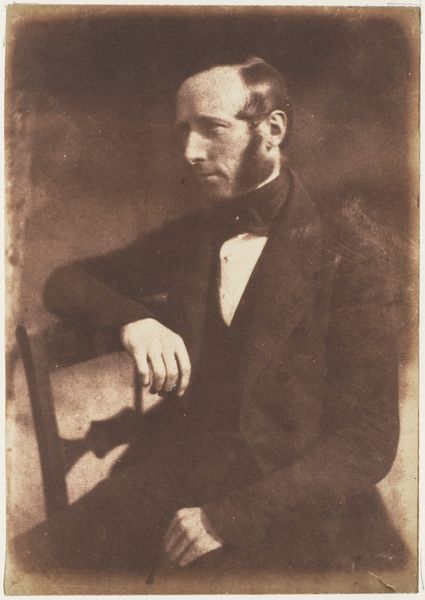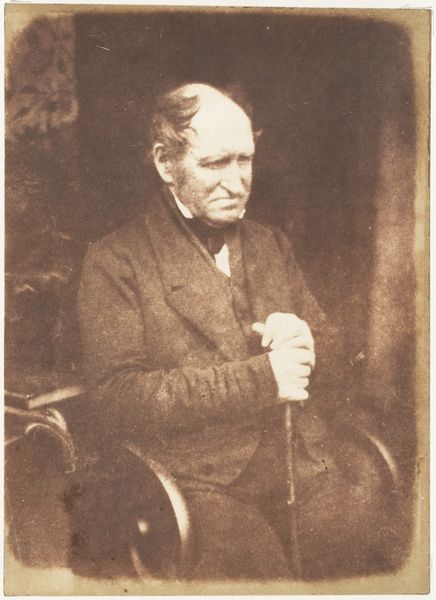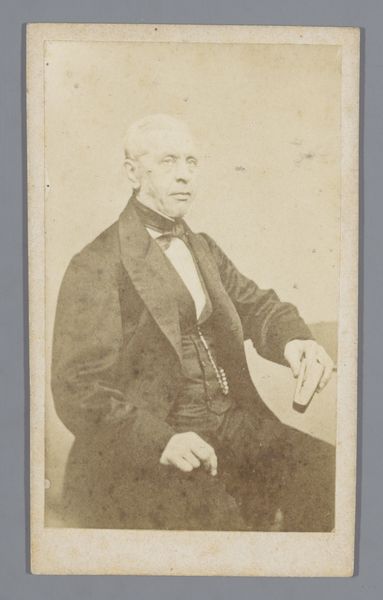
photography, gelatin-silver-print
#
portrait
#
photography
#
romanticism
#
gelatin-silver-print
Copyright: Public Domain
Curator: Immediately striking is its tonal range; the gelatin-silver print evokes a sense of both starkness and delicate gradation. Editor: Agreed. It possesses a somber quality. One can't help but notice the somewhat burdened air about this reverend from Borgue. He carries something with him, a weight that's palpable in his stance, in the dark background, in the solemn book that he seems to lean on more than hold. Let’s share some background on it. Curator: This photograph by Hill and Adamson, created sometime between 1843 and 1847, now resides here at the Metropolitan Museum of Art. Beyond being a remarkable likeness, it gives us insight into 19th-century Scottish society, a period of intense religious and social change. The sitter himself represents a kind of stoic pillar of his community. Editor: Do you find it surprising the degree to which the diagonals drive the composition here? From the gentle tilt of his head, to the slope of the book, the angle of his hands; it's all dynamic rather than static. I feel this tension acutely. Curator: Exactly, it's a moment caught in time. Observe the carefully chosen accoutrements that communicate aspects of his identity. The book could symbolize his calling and role as teacher, with all of the responsibility that entails; note that the resolution obscures the title of the book, perhaps inviting broader reflections on theological knowledge rather than just focusing on one religious book. Even his clothing indicates something about his place, but also restraint—a life of modesty dedicated to higher principles. The scarf at his neck reminds of more classical portrayals but hints also to his humanity. Editor: So even in early photography we see elements of formal portraiture persisting – like the subject presented at a slight remove and carefully posed with symbolic elements that support a narrative of distinction and respectability. Yet there’s a fragility suggested by the medium and soft focus itself which creates an entirely different viewing experience than, say, painting of the same era. It reveals perhaps some sense of underlying melancholy or existential doubt too? Curator: That is a valid observation, though such interpretation remains open, subject to one's perspectives and perhaps projecting contemporary notions of religious life back on the piece. In either case, the emotional ambiguity undoubtedly adds depth. Editor: Absolutely. It leaves us much to contemplate about faith, image, and the passing of time. Curator: And how photography as a technology impacted both our capacity for preserving moments, and for ascribing symbolism to even the simplest aspects of everyday life.
Comments
No comments
Be the first to comment and join the conversation on the ultimate creative platform.
